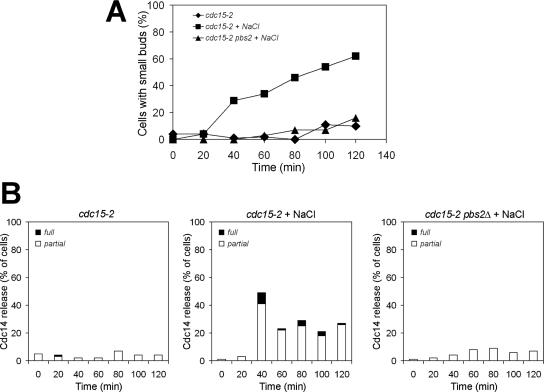Figure 4.
The HOG pathway promotes Cdc14 release from the nucleolus in MEN mutants treated with NaCl. cdc15-2 (A1674) and cdc15-2 pbs2Δ (A10710) cells were arrested at 37°C for 2 h. When the arrest was complete, the cdc15-2 culture was split, and one-half of the culture was maintained at 37°C and the other half was transferred into medium containing 0.5 M NaCl. The cdc15-2 pbs2Δ culture was transferred to 37°C medium containing 0.5 M NaCl. At the indicated times, samples were taken to determine the percentage of cells with small buds (A) and the release of Cdc14 from the nucleolus (B). The graph on the left in B shows the percentage of cdc15-2 cells with Cdc14 released from the nucleolus in medium lacking NaCl. The graph in the middle shows the percentage of cdc15-2 cells with Cdc14 released from the nucleolus in medium containing NaCl. The graph on the right shows the percentage of cdc15-2 pbs2Δ cells with Cdc14 released from the nucleolus in medium containing NaCl. “Partial release” is defined as some Cdc14 being diffuse throughout the cell, but some enrichment of Cdc14 being detectable in the nucleolus.

